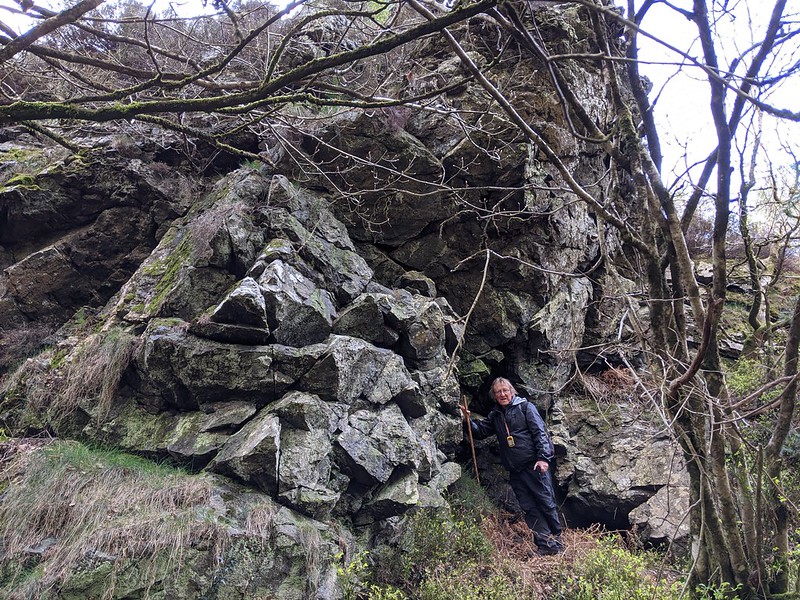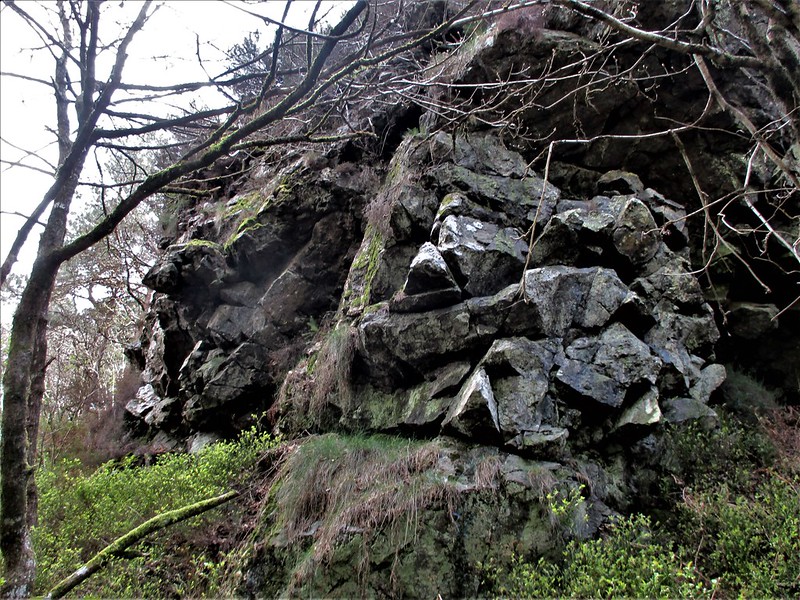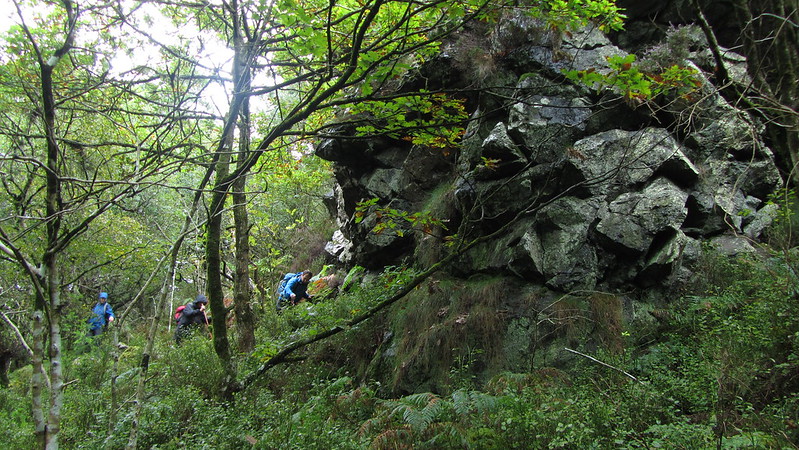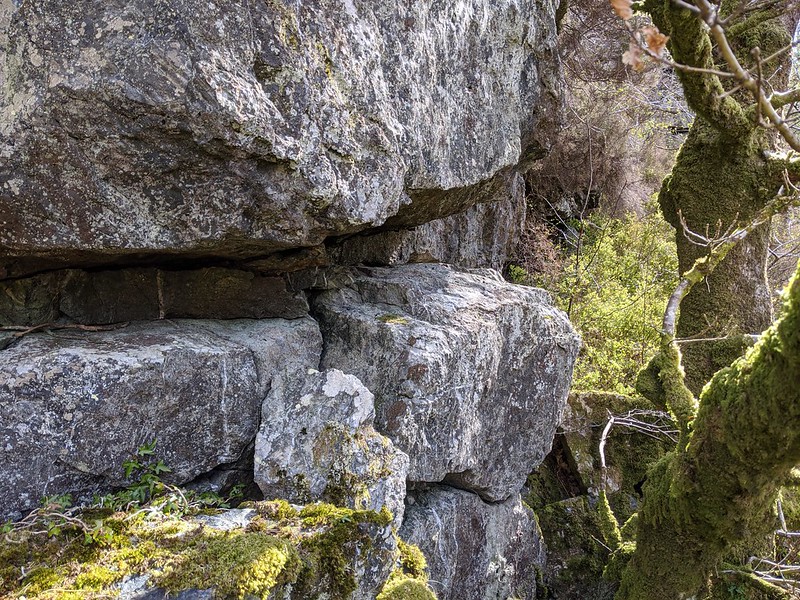TORS OF DARTMOOR
a database of both lesser- & well-known rocks and outcrops
Hepstock RockHepstock Rocke  One of Dartmoor's grandest lesser-known tors graces the steep slopes of Ausewell Wood, cloaked as it is by conifer and bracken, and concealed in parts by sunlight making it of somewhat ominous appearance. This huge outcrop can be found about 400 metres to the west-south-west of the three principal bosses of Ausewell Rocks, and about 75 metres or so below in altitude, whilst it is no more than 200 metres to the east of Raven Rock. Ordnance Survey Maps quite clearly mark an outcrop between these two masses, but is left unnamed on even their current maps.  A redrawn 1605 map of Ashburton by J S Amery (1924) gives this group the name of 'Hepstock Rocke', and shows it as a linear outcrop that stretches from Ausewell Rocks to the River Dart that is far below, engulfing Raven Rock as prior to afforestation, it was likely seen to be positioned on the same ridge. The name of 'Hepstock' gives much-deserved credence to this otherwise forgotten tor. In 1940 Richard Hansford Worth mentions the rocks in transcripts held by the Devon Association and later repeated in his book 'Worth's Dartmoor'; "A similar furnace is to be seen at the old 'Iron Mill' on the bank of the Dart, under Hepstock and Awsewell Rocks."  Here we have a truly stupendous tor that is among the best that the hidden landscape of Dartmoor has to offer, an outcrop so grand and rearing itself into the sky that it crooks your neck to look up its sheer walls that are predominantly composed of sedimentary rock. The best pile is the upper that presents as a rugged bastion, but further down the hill you notice a change in rock type; we have now moved into metamorphic rock and the geology appears much paler and less fractured. The ground around these rocks is difficult walking in places but puts the visitor in a sense of awe where they can reflect on the intrusive conifer trees which block out sunlight as opposed to the natives that find shelter in amongst the extensive clitter below and to the south. This clitter extends to a forestry track below.  For so long off limits to the public without permission, Ausewell Wood is now accessible thanks to a collaboration between The National Trust and The Woodland Trust. Whilst Hepstock Rock can be reached, under the Wildlife and Countryside Act 1981, there are restrictions elsewhere within the woods between the beginning of March and the end of July due to being in close proximity to sensitive species of wildlife. These sites are being monitored with trail cameras and/or CCTV and you are advised to respect any closures in place.
| ||||||||||||||||||||||||||||||